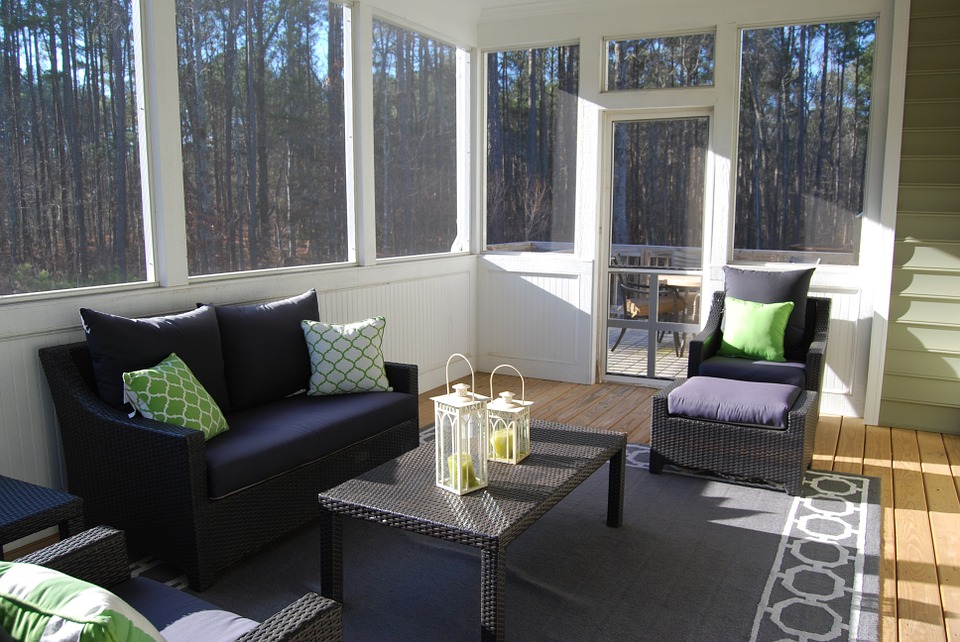Sprucing up your house is a great idea but you may not know where to begin. If small projects like retiling your bathroom or changing the living room color scheme seem too inconsequential, you may want to plan for a real game-changer. A DIY addition to your property can not only give you a large-scale project to invest time in but also make your home incredibly appealing.
Discover the basics about an exciting new addition you could build on your property: the sunroom.
What is a Sunroom?

After being cooped up for so long, many people want to enjoy the outdoors. Research reveals that additions such as patios are popular among homebuyers because they allow outdoor entertainment. A sunroom serves much the same purpose of a patio but with the added benefit of a roof and protection from inclement weather. But what is a sunroom? A basic sunroom is an enclosed space protected from insects and weather by screens or windows. It is also known as a solarium or even a patio porch. A sunroom can serve many purposes.
- An Entertainment Space
There’s a reason many builders of event centers include sunroom elements in their design. If you want to have a tea party in the afternoon but don’t want to be blinded by glare or sweat profusely, a sunroom offers shade and cool breezes. You can also have casual parties in it. Simply throw open the doors and guests can decide whether to enjoy the event outside in your garden or relax in the shade of the sunroom.
- A Lounge
Sunrooms can also serve as lounge extensions. If you want to curl up with a good book while watching bees frolic in the air, a sunroom is a great place to do so. There are also many benefits to enjoying nature’s beauty. You could find yourself more relaxed thanks to the soothing greenery visible in your sunroom or you can cut down on air conditioning thanks to the natural breezes it offers.
- Not a Greenhouse
Despite their surface-level similarities, sunrooms and greenhouses are not the same. A greenhouse is carefully climate-controlled to provide the best possible growing environment for plants. The glass used in greenhouse construction is specially designed to keep temperatures high. A sunroom is more of an enclosed porch. Although you can grow plants in a sunroom, don’t make the mistake of thinking it can offer the same advantages as a greenhouse.
- Not a New Residence
A sunroom isn’t supposed to function as a separate living space. Those types of additions, sometimes known as granny cottages overseas, are built with their own kitchens, bathrooms, and other amenities. By comparison, a sunroom is simply a large room enclosed by windows and screens. It is meant to be a place for entertainment or for private relaxation, not a smaller dwelling.
Sunroom Design and Building Tips
When building and designing your own sunroom, you need to keep a few tips in mind if you want it to turn out beautifully.
- French Doors are Ideal
The perfect sunrooms offer a seamless connection of indoors and outdoors. You can achieve this connection by using French doors or floor-to-ceiling windows that you can open. This makes the sunroom more versatile. If you are holding a large party, you can throw open the French doors and allow room for guests to explore outside. If you prefer something more intimate or the weather goes bad, you can close the windows and carry on indoors.
- Heighten the Ceiling
Sunrooms are popular because they allow natural air in and help keep your house ventilated. High ceilings are key to this effect since they improve circulation. If your home’s standard ceiling height is 10 feet, your sunroom should have a ceiling between 12 and 15 feet. You can supplement natural ventilation provided by breezes with a couple of large ceiling fans.
- Wood and Nature Combine
Sunrooms can be built out of many materials, but if you are building one on your own, you should consider using the same materials you would use to build a gazebo. Building supplies such as lumber and wooden boards are more breathable than cement and steel. They are vastly cheaper which means you can save on money, and they also lend a more naturalistic vibe to a sunroom.
Building a new addition to your house is a big task but one that doesn’t have to be very complicated. Sunrooms provide you with an easy way to increase your home’s appeal and bring you closer to nature without breaking the bank.



